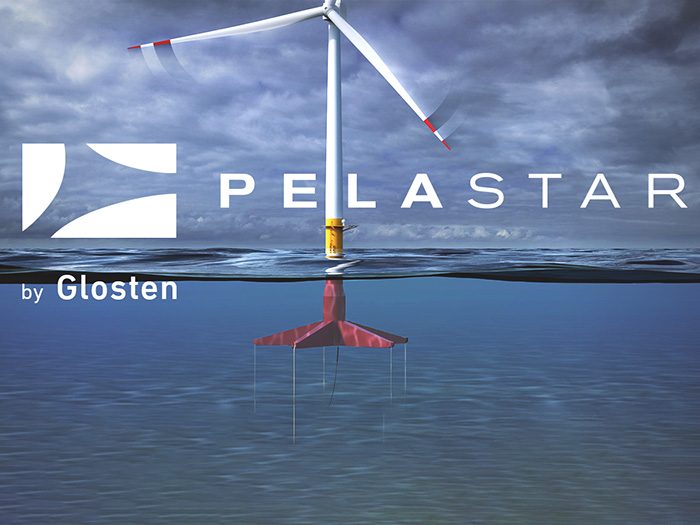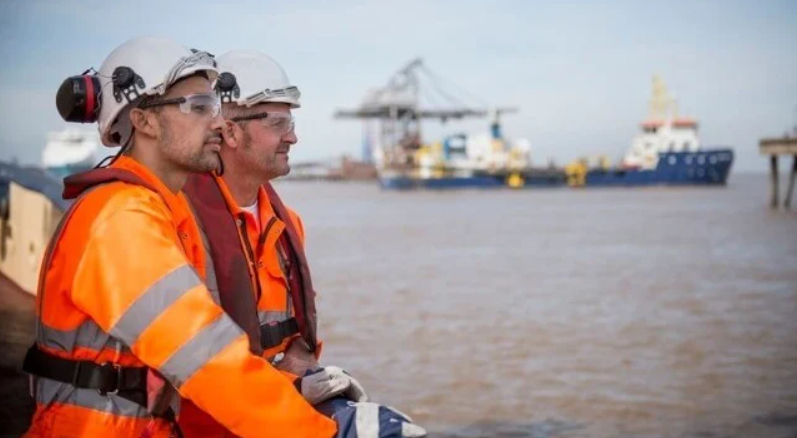Positive Impact Finance Loan Agreement
Kawasaki Heavy Industries, Ltd. has announced that it has concluded the first shipbuilding contract with Kawasaki Kisen Kaisya Ltd. (K-line) for a new 86,700 m3 liquefied petroleum gas (LPG) and liquefied ammonia gas (LAG) carrier powered by LPG fuel.
The vessel is equipped with separate cargo tanks designed to carry LPG and LAG at the same time. This contract represents the 71st LPG carrier to be constructed by Kawasaki, and their eighth LPG-fueled LPG carrier. Kawasaki plans to complete the construction of the vessel at its Sakaide Works in 2023.
The advantage of this dual-purpose vessel is its capability to simultaneously carry LPG, which is already used as a low-carbon energy source, and LAG, a new fuel contributing to the establishment of a decarbonized society. Another feature is the greater capacity of the cargo tanks as compared to conventional carriers, which was achieved without significantly changing the vessel’s length, breadth, or other main specifications.
Fueled by low-sulfur fuel oil and LPG (which significantly reduces the emission volumes of sulfur oxides [SOx], CO2, and other pollutants in the exhaust gases as compared to marine fuel oil), the vessel meets SOx emission standards set by the International Maritime Organization (IMO)*1, as well as the IMO’s Energy Efficiency Design Index (EEDI)*2 Phase 3 regulations, which are scheduled to adopt stricter CO2 emission standards in 2022.
To meet environmental standards being tightened globally, and to implement action plans set forth in the Sustainable Development Goals (SDGs) adopted by the United Nations and other initiatives, Kawasaki plans to develop and build more LPG-fueled LPG carriers and other commercial vessels that meet environmental standards, as well as to develop other eco-friendly marine technologies, to contribute to the establishment of a low-carbon/decarbonized society. These products include vessels for transporting liquefied hydrogen, considered to be the next-generation energy source.
Specifications:
Length overall |
Approx. 230.00 m |
Molded breadth |
37.20 m |
Molded depth |
21.90 m |
Molded summer draft |
11.65 m |
Tank capacity |
86,700 m3 |
*1 – SOx emission standards:
Since January 2015, SOx emission regulations specifying a fuel sulfur content of 0.1% or less have been enacted in the Emission Control Areas (ECAs) of Europe and America. In addition, beginning in January 2020, vessels traveling in marine areas in all other parts of the world are required to use fuels with a sulfur content of 0.5% or less, or to use alternative equipment to reduce the SOx content of exhaust gases to an equivalent level.
*2 – Energy Efficiency Design Index (EEDI) regulation:
An international regulation that enforces compliance of newly-constructed vessels with energy-saving performance regulation values using the Energy Efficiency Design Index (EEDI), which is defined as the number of grams of CO2 emitted when transporting one ton of cargo over one mile. Required EEDI regulation values are made stricter in phases according to the construction contract and delivery dates. For some types of vessels such as large LPG carriers and LNG (liquefied natural gas) carriers, compliance with Phase 3 (30% reduction in CO2 emissions from the baseline [Phase 0]) is required for vessels contracted for construction in 2022 and later.

Finance Loan Agreement

On another side, Kawasaki Heavy Industries, Ltd. announced today that it has concluded a loan agreement (hereinafter “Agreement”) for positive impact finance (PIF)*1 (with unspecified use of funds) with Sumitomo Mitsui Trust Bank, Limited (hereinafter “SMTB”) as part of its sustainable finance initiatives following the issuance of the Sustainability Bonds in July 2021. PIF is in line with the Principles for Positive Impact Finance*2 released by the United Nations Environment Programme Finance Initiative (hereinafter “UNEP FI”) *3.
In concluding the Agreement, Kawasaki selected themes specified in the attached from its materiality (key issues) as activities that will contribute in achieving the SDGs (Sustainable Development Goals). The progress and results of these efforts will be disclosed in the Kawasaki Report (integrated report).
Furthermore, in order to ensure the transparency and objectivity of the evaluation by SMTB, the company has obtained a third-party opinion*4 from Japan Credit Rating Agency, Ltd.
Through its fundraising activities, Kawasaki will continue to contribute to the achievement of the SDGs and the realization of a sustainable society.
*1 |
PIF is a loan intended to provide continuous support for corporate activities while comprehensively analyzing and evaluating the impacts (both positive and negative) on the environment, society, and the economy. The key feature of PIF is that it uses the degree of contribution to the achievement of SDGs through its corporate activities, products, and services, as an evaluation indicator and discloses the information on the process. |
*2 |
The Principles for Positive Impact Finance was developed by UNEP FI in January 2017 as a financial framework for achieving the SDGs. Companies disclose the level of contributions to achieving SDGs through KPIs. Banks then provide funding by evaluating the positive impact observed from these KPIs that is intended to guide the borrowers to increase the positive impact and reduce negative impact.The lending bank, as a responsible financial institution, will check if the impact is continuing or not by monitoring the indicators |
*3 |
The United Nations Environment Programme Finance Initiative (UNEP FI)The United Nations Environment Programme (UNEP) is an executive body for implementing the “Human Environment Declaration” and the “International Environmental Action Programme”, established in 1972 as a subsidiary body to the United Nations system. The United Nations Environment Programme Finance Initiative (UNEP FI) represents a broad as well as a close partnership between UNEP and more than 200 global financial institutions. Since its establishment in 1992, UNEP FI has been working in concert with financial institutions, policy/regulatory authorities to transform itself into a financial system that integrates economic development and ESG considerations. |
*4 |
Third-Party Opinion by Japan Credit Rating Agency, Ltd. (Available in Japanese Only):URL: https://www.jcr.co.jp/greenfinance/ |

















